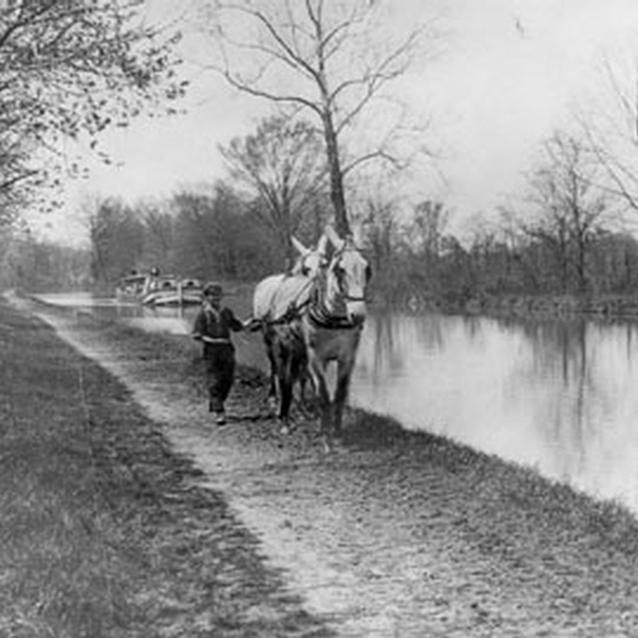Home life for children changed dramatically during the Civil War. Children, just like adults, were under the constant worry that something was going to happen to a loved one off fighting or even to their own backyards. Most of the battles occurred in the Confederate States, which for civilians living in that region, had even more problems to worry about. This war would affect the future generations of Americans, starting with these young witnesses to the war.
"I can't realize that I am never to see that dear boy again... it is too hard to realize." Sarah Palmer, writing about her younger brother, James, killed at the Second Battle of Manassas.
Constant Worry

NPS
The crews of Chesapeake & Ohio Canal boats were composed of either the boat captain and a hired crew or the captain and his family. An important job on the crew was mule boy. They walked the towpath with the mule teams pulling the canal boats. Often as young as 8 years old, these boys walked up to 16 miles during six hour shifts. Thus the phrase in a popular song of the time, "I got at mule and her name is Sal, 16 miles on the C&O Canal."
During the Civil War the C&O Canal experienced the best and worst of times. Canal boats transported record amounts of coal to help fuel the Union war effort. At times Confederate sabotage impeded operation of the canal. During troop crossings of the Potomac River and the canal, and when battle raged nearby, workers frequently fled until the danger passed.
During the Battle of Antietam, families from Sharpsburg fled the town and sought shelter along the canal. Many women and children hid in Killiansburg Cave three miles upstream from Shepherdstown.
Other families found their homes overwhelmed with wounded after the armies passed by. Holding tightly to their own humanity, but losing their innocence to the awful sights of war, children gave aid to the sick, wounded, and dying; no matter what uniform they wore.
While dealing with realties of war on the home front, most children worried about the battlefront as well. Where were their fathers and brothers? News traveled slowly and what arrived was not always welcome. Many photographs of children at this time show them dressed in mourning or holding the image of a loved one they would never see again.
Witnesses to War

Library of Congress
The children of John and Martha Thornberry witnessed the tumultuous events of the two battles of Manassas and shared in suffering from the privations and dislocations of war. Their home across from Sudley Methodist Church escaped the combat of First Manassas but was overrun with wounded Federals following the fighting. While John was serving on the battlefield with the 49th Virginia Infantry, Martha and the children sought shelter during the battle at her sister's nearby home on Stony Ridge. Returning to their modest dwelling in the aftermath, she and the children found the house emptied and their possessions tossed and broken in the nearby well. John later returned, disabled from wounds, to convalesce in the care of relatives.
Eight months later in March 1862, Northern photographer George N. Barnard captured one of the war's most poignant images of lost innocence. The photograph, among a set of images taken in the vicinity of Sudley Church, reveals four of the five Thornberry children pausing amid play to observe the passage of Union cavalry at Sudley Springs Ford.
The return of the armies to the area during the Second Battle of Manassas in late August 1862 brought the war to the Thornberry doorstep once more. Laura Thornberry Fletcher was seven years of age at the time of the battle. Nearly 75 years later, she recalled the fighting being "worse than the first" battle. "We were driven from our home by big cannons planted on the east and on the west of our home," she wrote in a brief memoir. Warned by soldiers to leave, the family sought refuge nearby and watched the action from a safe distance, with the rattle of musketry continuing until late in the day. After the battle, Laura remembered her father returning to the battlefield and trying "to count the dead men, but could not." After passing over 150 bodies, John Thornberry grew sick from the carnage and could not continue. Such stark images remained vivid to Laura despite the passing of a lifetime.
Part of a series of articles titled No Time for Games.
Previous: The Weight of War on Little Soldiers
Next: Caught In The Middle
Last updated: February 3, 2015
